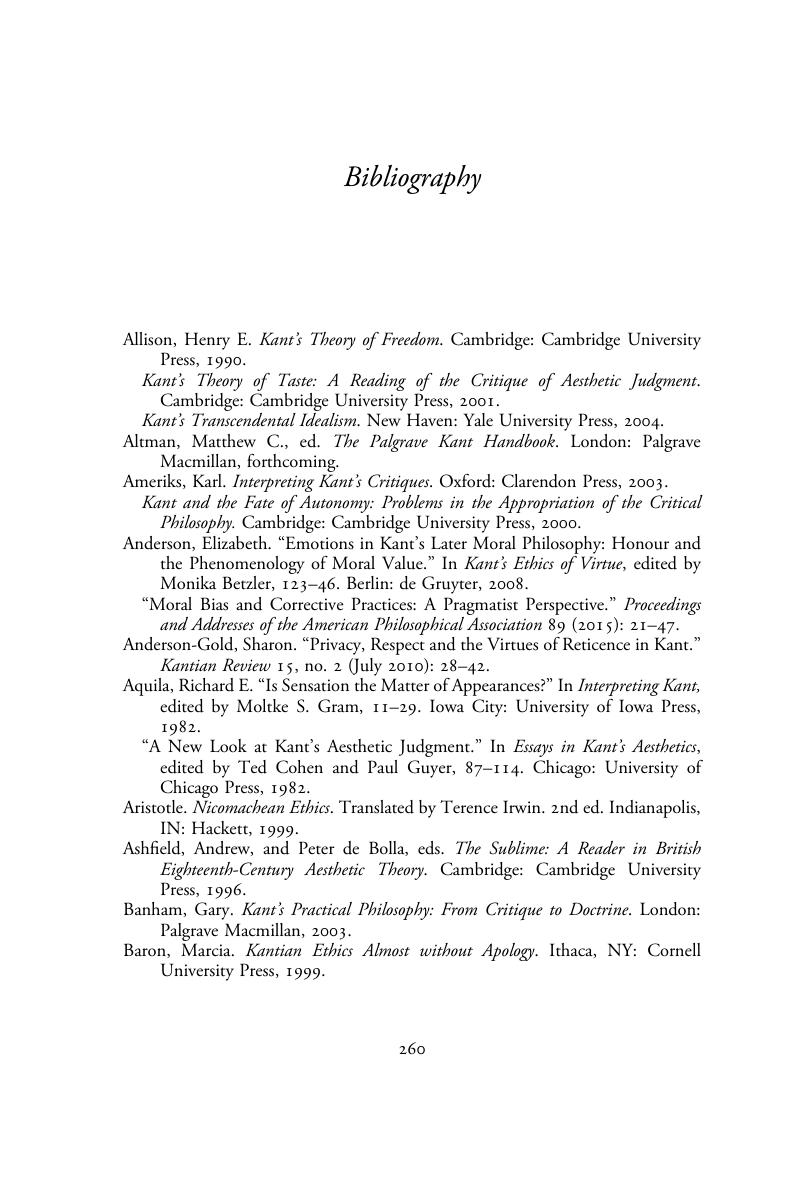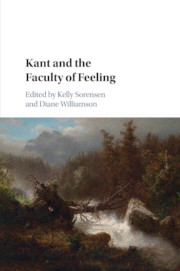Book contents
- Kant and the Faculty of Feeling
- Kant and the Faculty of Feeling
- Copyright page
- Contents
- Contributors
- Abbreviations
- Introduction
- 1 Rational Feelings*
- 2 Two Different Kinds of Value?
- 3 The Practical, Cognitive Import of Feeling
- 4 Feeling and Inclination
- 5 Feeling and Desire in the Human Animal
- 6 “A new sort of a priori principles”
- 7 Between Cognition and Morality
- 8 What Is It Like to Experience the Beautiful and Sublime?*
- 9 How to Feel a Judgment
- 10 The Feeling of Enthusiasm*
- 11 Sympathy, Love, and the Faculty of Feeling*
- 12 Respect, in Every Respect*
- 13 Is Kantian Hope a Feeling?*
- Bibliography
- Index
- References
Bibliography
Published online by Cambridge University Press: 01 March 2018
- Kant and the Faculty of Feeling
- Kant and the Faculty of Feeling
- Copyright page
- Contents
- Contributors
- Abbreviations
- Introduction
- 1 Rational Feelings*
- 2 Two Different Kinds of Value?
- 3 The Practical, Cognitive Import of Feeling
- 4 Feeling and Inclination
- 5 Feeling and Desire in the Human Animal
- 6 “A new sort of a priori principles”
- 7 Between Cognition and Morality
- 8 What Is It Like to Experience the Beautiful and Sublime?*
- 9 How to Feel a Judgment
- 10 The Feeling of Enthusiasm*
- 11 Sympathy, Love, and the Faculty of Feeling*
- 12 Respect, in Every Respect*
- 13 Is Kantian Hope a Feeling?*
- Bibliography
- Index
- References
Summary

- Type
- Chapter
- Information
- Kant and the Faculty of Feeling , pp. 260 - 271Publisher: Cambridge University PressPrint publication year: 2018



